
Filmed and Produced by Gail Osherenko. Runtime 42 min. 37 sec.
For home or academic use:$25.00. For public performace rights: $45.00.

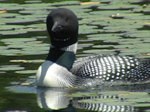
The eerie calls and striking black and white plumage of the common loon captivate those of us who spend time on northern lakes and ponds between April and October. Then the loons disappear. Quiet descends. Where do they go? How do they survive in winter?

Common loons change their brilliant breeding plumage for dull feathers that provide better camouflage in winter, but make them less obvious in the marine environment. They seldom call, so it's easy to miss them even in the bays and harbors we frequent.
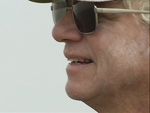
Exploring The Dark Side of the Loon, you visit two "loon pools" (protected winter gathering grounds). On the east coast at North Carolina's Cape Lookout National Seashore, conservation biologist and ornithological expert Dr. Paul Spitzer, is our guide.
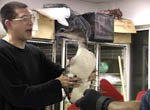
On the west coast in Morro Bay, California, biologist and aviculturist Darwin Long conducts the only long-term and detailed study of wintering common loons. He has been banding and studying loons amidst the remaining fishing fleet as well as the kayaks and yachts of what is now a busy tourist mecca.
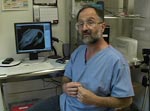
In Massachusetts, wildlife veterinarian Dr. Mark Pokras, with his students and colleagues, has necropsied dead loons for 20 years to understand the causes of their mortality - both natural and human caused.
You'll learn how scientists in the field and laboratory unlock the mysteries of a bird that has survived for 60 million years. And you'll discover how loons are helping scientists to understand the perils loons face in winter, and how humans can help ensure their survival - and ours.

Music by David Budbill on shakuhachi. David writes poems, plays, and novels. His "emailite" and work emanates from the Northeast Kingdom of Vermont. Visit his website to find out where he is reading and performing.
Dark Side of the Loon now available on Amazon Instant Video.
Click here to download the teacher's guide to Dark Side of the Loon
The Dark Side of the Loon is filmed, narrated, produced and edited by Gail Osherenko.
Shannon Dybvig, assistant editor and webmaster. Still photos of loons in Vermont are by photographer Orah Moore of Haymaker Press.
Visit the official website here: The Dark Side of the Loon
Scheduled screenings
July 13 - Mt. Desert Island, Maine - (at Somes-Meynell Wildlife Sanctuary, 57 Pretty Marsh Road) - Tues 7:30pm
Contact David Lamon, Executive Director for more information.
Previous Engagements

March 5 - Montpelier, VT - Unitarian Church, sponsored by North Branch Nature Center - Fri 7pm
Discussion with Vermont loon biologist, Eric Hanson, follows the film.
Jan 16-18 Morro Bay, CA Winter Bird Festival - sneak previews
Jan 29 Santa Barbara International Film Festival - premier
Feb 1 Santa Barbara International Film Festival - premier
April 16 Santa Barbara, CA - Cliff House at UCSB sponsored by Ty Warner Sea Center
April 30 Ventura, CA - Real Cheap Sports
May 1 Los Olivos, CA - Wildling Gallery
May 27 Craftsbury Common, VT - Public Library & Vt Center for Ecostudies
May 30 Muskegon, MI - Muskegon Film Festival
July 22 Hanover, NH - The Dickey Center, Institute of Arctic Studies, Dartmouth College
July 23 Moultonborough, NH - The Loon Center
Aug 6 Morrisville, VT - River Arts & Vermont Center for Ecostudies
Aug 20 Errol, NH - Town Hall sponsored by Umbagog National Wildlife Refuge
Sept 2 - Craftsbury, Vermont - Craftsbury Outdoor Center
Sept 17 - Oquossoc, Maine - Rangeley Guides and Fishermens' Assoc.
Nov 10 - Ventura, CA - Poinsettia Pavillon, sponsored by Ventura Audubon Society - Tues 7:30pm
Featuring Q&A with film maker, scientist Darwin Long
What People are Saying
"TWO THUMBS UP for the insightful and local nature documentary, The Dark Side of the Loon by independent filmmaker Gail Osherenko, that appeals to all nature lovers. Osherenko's science documentary breaks new ground in the unexplored venue of loon migrations with fabulous lake and coastal film footage, including beautiful Morro Bay. Osherenko is a compassionate story teller, who captures the loon under her lens with incredible sensitivity that touches the heart. Osherenko delivers diversity, clarity, and an environmental mission with top-notch local and national ornithologists." -- Debra Piot (Consultant, writer on human ecology and biodiversity conservation)
"Amazing documentary and very local. if you have any interest at all in nature you have got to see this movie." -- San Luis Obispo International Film Festival filmgoer
"If, like most, you've never heard a loon call indoors, you are in for a treat. What is loud outdoors is jaw-dropping in a laboratory... Little known facts about loons are laid bare in this film: loons seldom call during winter: their striking black and white plumage is shed, replaced by a rather dull brown, until new flight feathers grow; and they remain flightless throughout their molting period. An unexpected and lovely surprise is the music in the background, provided by poet David Budbill on shakuhachi, a bamboo flute." -- Jennifer Hersey Cleveland, The Barton Chronicle
"Recently our local Maine Audubon chapter (Downeast Audubon) offered a viewing of your film Dark Side of the Loon at the Blue Hill Public Library and I wanted to tell you how much we all enjoyed it. We had about 50 people in attendance and we all learned a great deal about "our" loons as well as those out west. The photography was great and we really connected to the 3 people you chose to interview. A job well done!" --Leslie Clapp, Downeast Audubon, April 2011
Learn More
Did you know that people on the coast of North Carolina used to hunt and eat loons each spring? To learn about this hunting and culinary tradition Click here (PDF)
Confederated Salish & Kootenai Tribes
Vermont Loon Recovery Project, Vermont Center for Ecostudies
BiolDivdersity Research Institute
Cornell University Cyber Tower - 6 video presentations on Understanding Loons
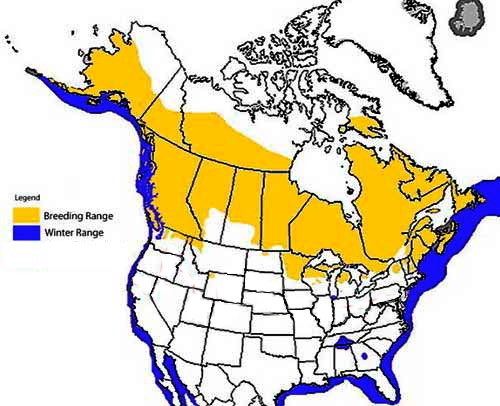


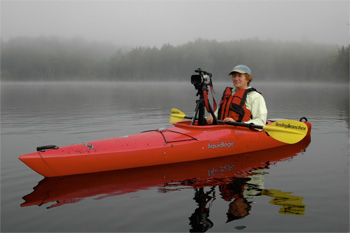
Gail Osherenko
Gail Osherenko filmed, produced, and narrated The Dark Side of the Loon in 2007-2008. She lives in Santa Barbara, California and watches loons in Vermont in the summer.
Film making combines her passion for film and photography with her background in environmental law and science. Her first film Arctic Expedition premiered at the SBIFF in 2007.
She teaches coastal and ocean law and policy at the University of California's Bren School of Environmental Science and Management and is a Project Scientist with UCSB's Marine Science Institute. She holds a law degree from UC Davis, and worked as an environmental lawyer before moving to Vermont in 1981 and becoming immersed in Arctic studies. She studied and taught Arctic natural resources issues at the Center for Northern Studies in Vermont and at Dartmouth College in New Hampshire before relocating to Santa Barbara in 2003.
Photo by Orah Moore
Learn from the Experts
Paul Spitzer, PhD, conservation biologist
His article "Common loon mortality in marine habitats" is available online.
Darwin Long, conservation biologist, head of Morro Coast Audubon Winter Loon Study
Mark Pokras, DVM, Wildlife Clinic & Center for Conservation Medicine, Cummings
School of Veterinary Medicine, Tufts University, North Grafton, Massachusetts
http://www.tufts.edu/vet/facpages/pokras_m.html and
http://www.tufts.edu/vet/wildlife/staff.html
http://www.tufts.edu/vet/loons/index.html

| Theresa in Alberta, Canada | 02/25/2010 | |
I got my dvd yesterday of The Dark Side of the Loon. ... Loaded with great information on the Common loon. Glad to see that somebody down south is taking care of the loons while they are wintering there. | ||


